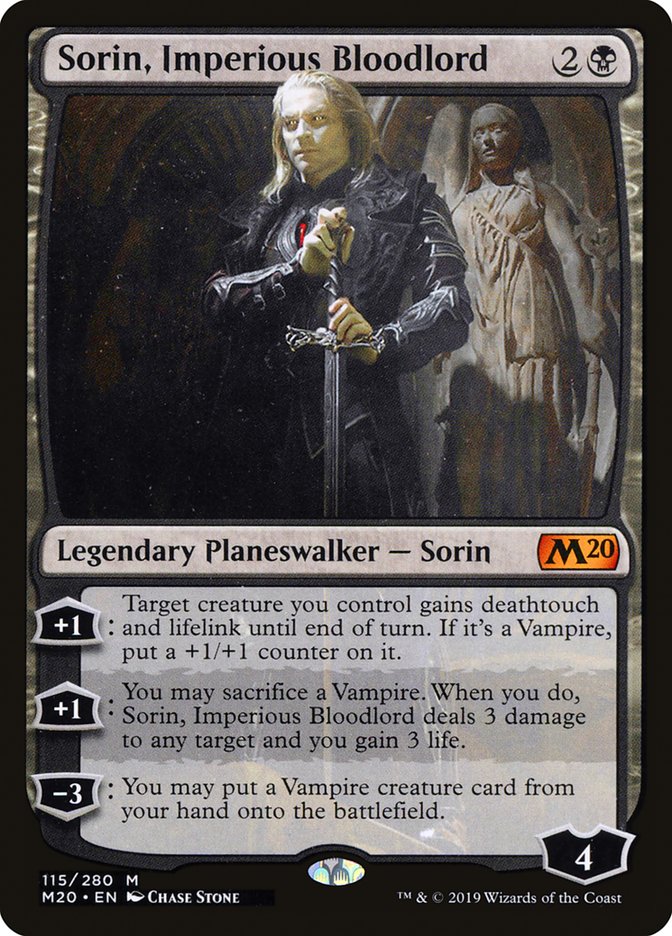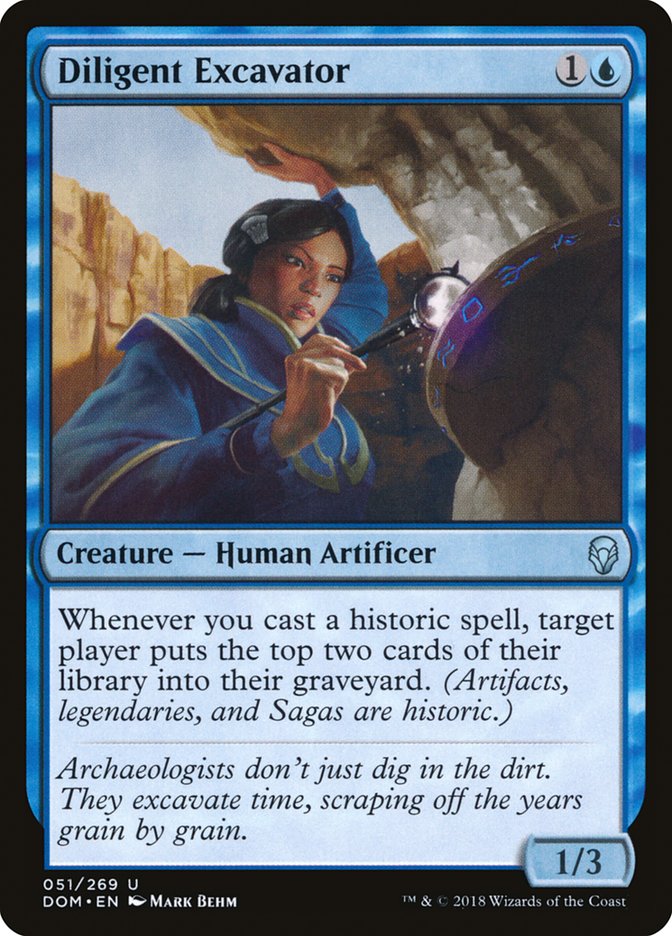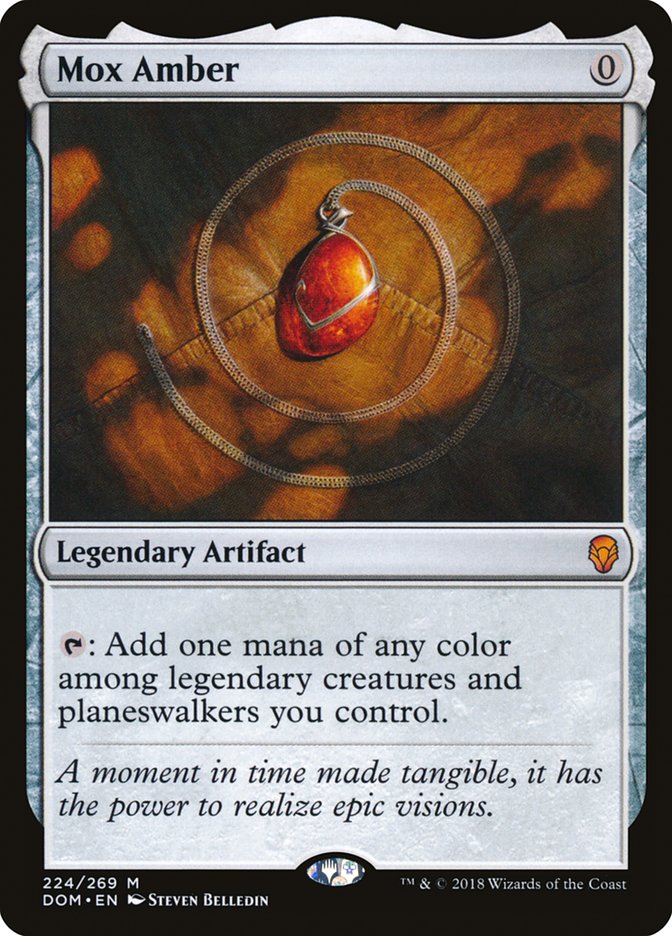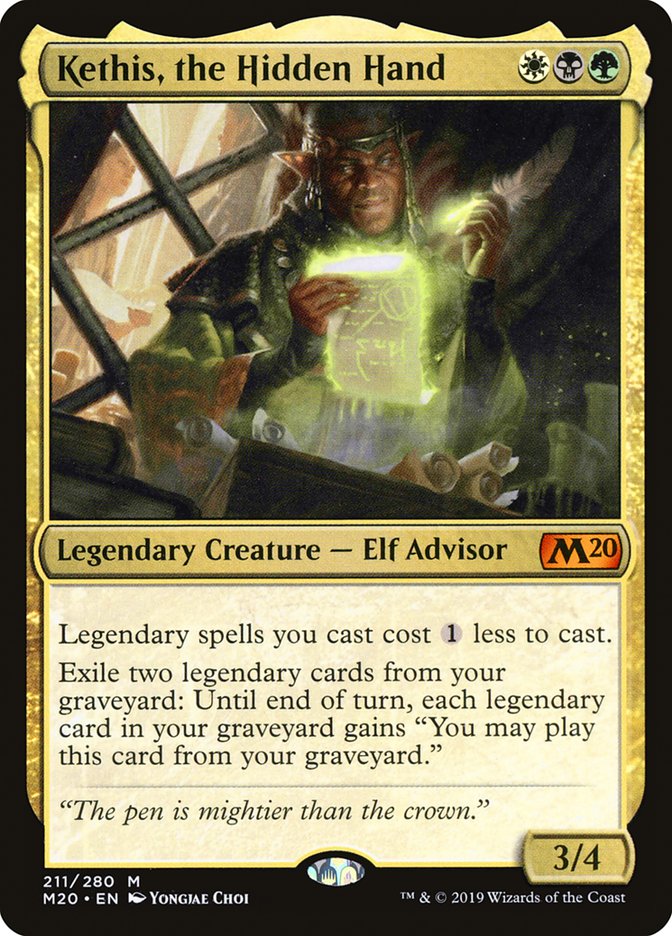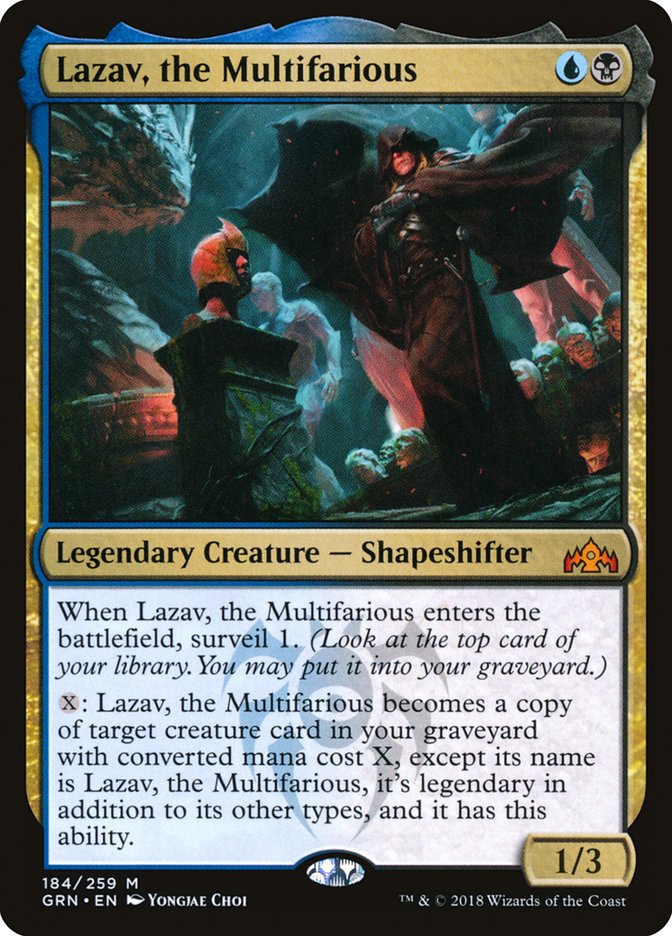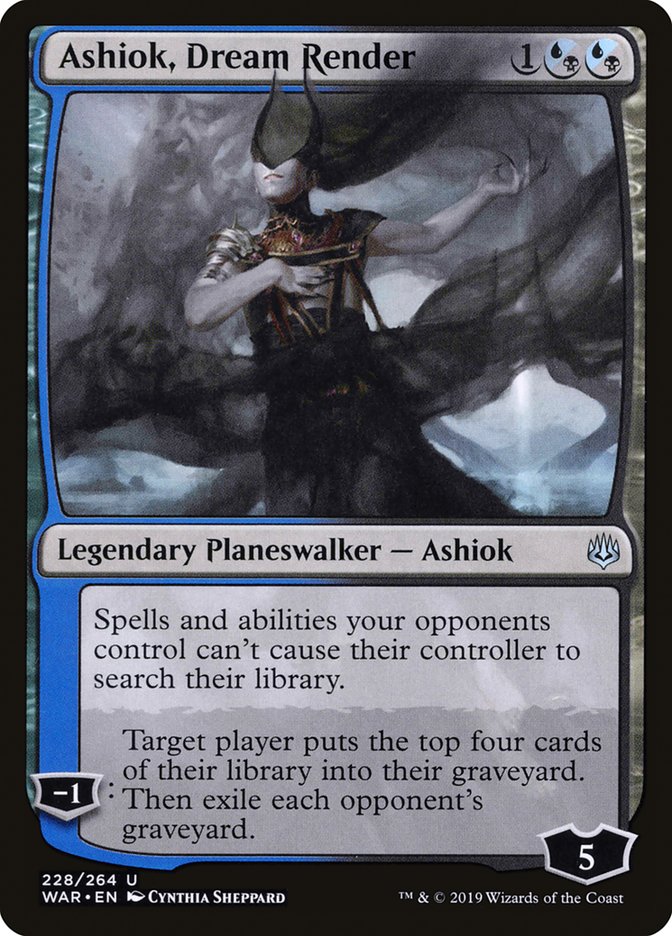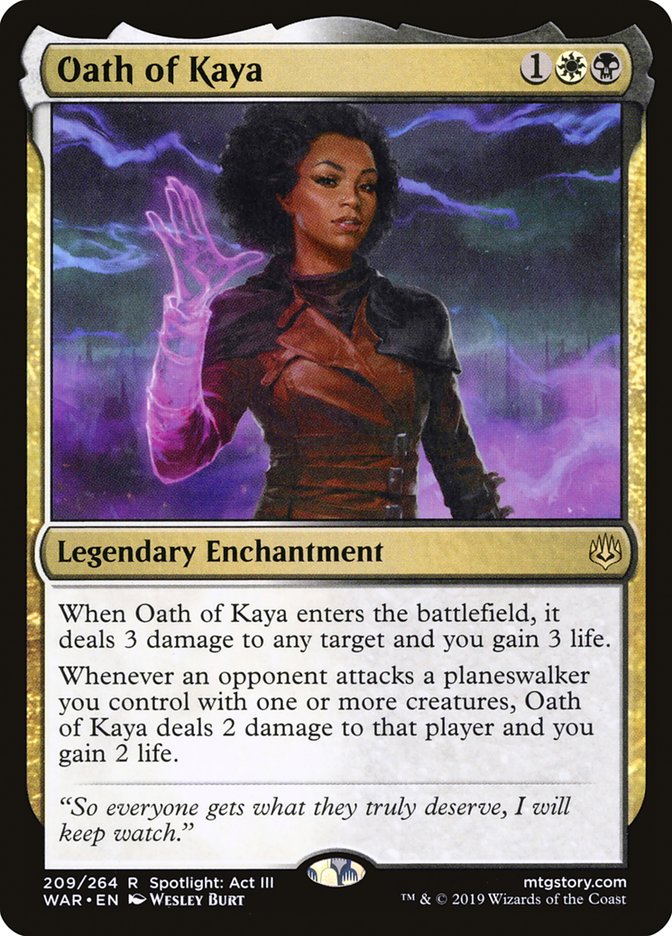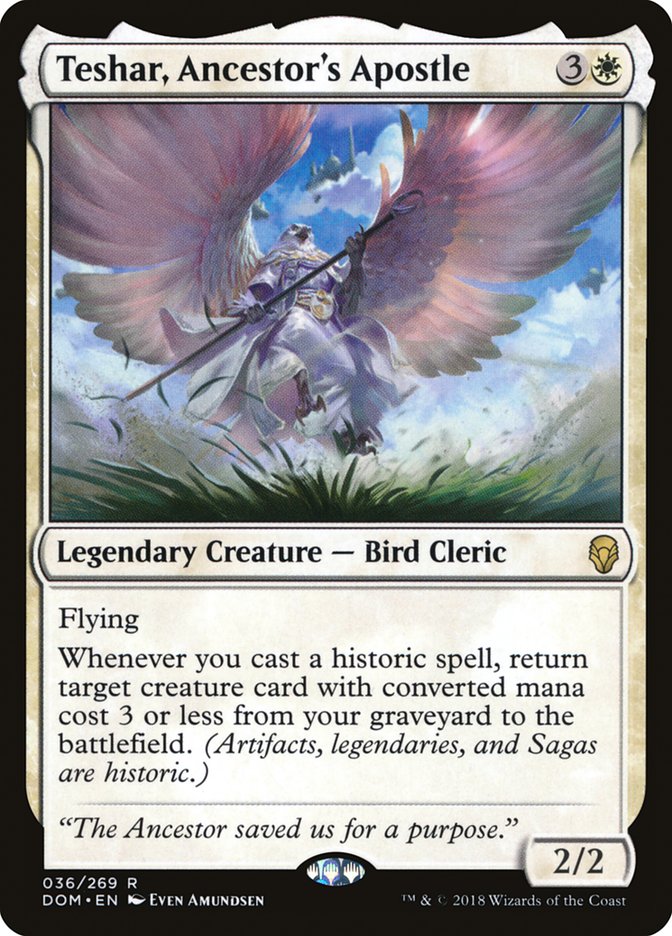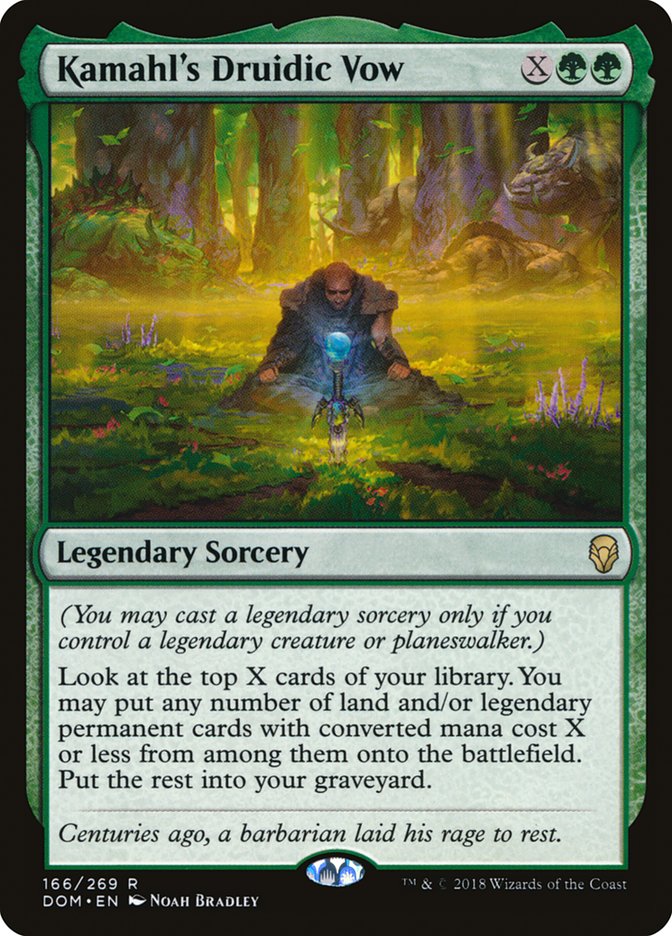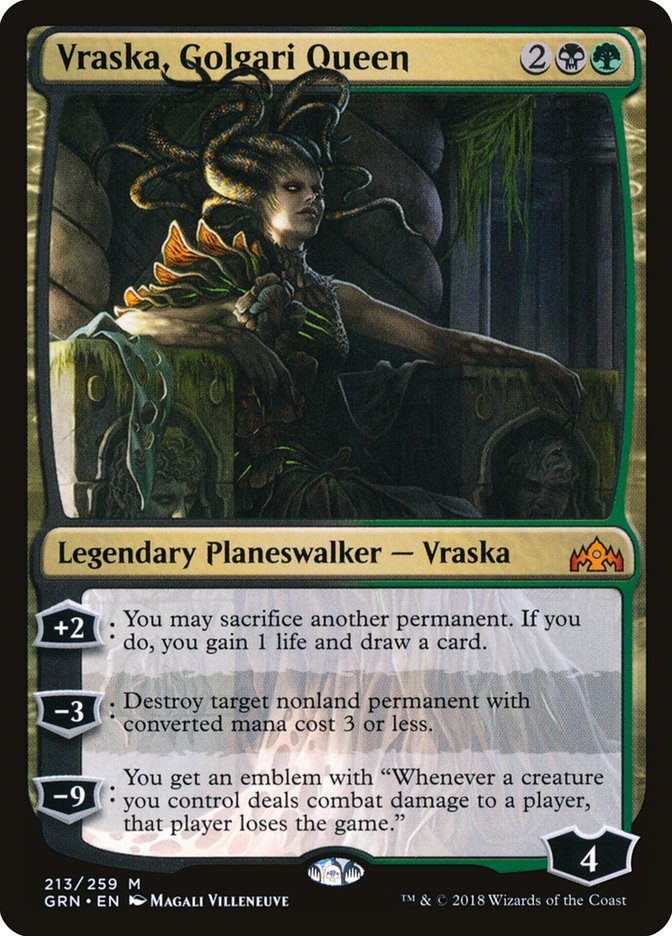Core Set 2020 Standard has the unusual distinction of never having been played at the highest level (PT/MC), so we never had the best teams sitting down for weeks at a time to find everything there is to find. Coincidentally, Core Set 2020 Standard has, in my opinion, showcased a slowly evolving format in which the best deck has regularly been a deck no one played two weeks earlier. It’s not that the format doesn’t have known great decks – everyone was on Orzhov Vampires from the day Sorin, Imperious Bloodlord was previewed, and decks like Simic Nexus and Mono-Red Aggro have remained competitive throughout. But the less obvious decks have been explored slowly, and have had amazing weekends when they take people by surprise.
There’s no real way to know if the format played out this way specifically because there wasn’t a big tournament early to “solve” the format for everyone, and it’s not clear in general whether those tournaments routinely find the best decks or whether they just set a strong enough narrative that it drives the format for the rest of its life cycle. Regardless, following this particular Standard season has been pretty amazing.
This weekend’s Arena MCQ was essentially the last major tournament weekend for this Standard format, so likely the last chance any deck in the format will have to make a name for itself, and in this last weekend, a completely new deck emerged that almost went through its entire lifespan in Standard overlooked.
That fact itself, before we even get to the deck, is a pretty big deal. We’re in a time when many of the best players in the world are streaming Core Set 2020 Standard many days a week, and most people are freely sharing information across a huge community on streams and Twitter, and we almost missed an entire competitive archetype. This is literally what brewers’ dreams are made of. The idea that there might be some completely hidden diamond in the rough that you can find if you just put some work into testing that weird mythic no one plays. This deck proves that at least sometimes, even these days, there’s something there to find.
So what is this deck?
Creatures (16)
Planeswalkers (9)
Lands (25)
Spells (10)

Well, that’s the list, but if you haven’t seen it in action, this might be one of the least informative decklists in terms of answering the question, “What does this deck do?” as many Hall of Fame players replied on Twitter that they have no idea.
This is the latest in a line of Diligent Excavator combo decks. This innocuous creature shows that any card that triggers for no mana when a repeatable effect happens is worth keeping an eye on as a combo piece.
In this case, the basic combo starts with two Mox Ambers available between your hand, graveyard, and battlefield, and a Kethis, the Hidden Hand and Diligent Excavator on the battlefield. When you cast a Mox Amber, it triggers the Excavator, which targets you, and when it resolves, it causes your tapped Mox Amber to go to the graveyard due to the “legend rule.” There, you can cast it again if you use Kethis’s ability and exile two legendary cards.
Every time you want to cast a Mox Amber that went to your graveyard since your last activation, you need to exile two legendary cards, but because over half your deck is legendary, your Diligent Excavator finds you more fuel. If you only have one Excavator and two Mox Ambers, you’ll run out of legendary cards fairly quickly, but if you can find a third Mox Amber first, then each time you use Kethis, it will allow you to cast two Mox Ambers, which lets your Excavators mill four cards, which is theoretically enough to keep going on average, but close enough that you’ll often fizzle if you don’t have some extra legendary cards in your graveyard to start.
Once you find the fourth Amber you’re basically home free to deck yourself while making mana. Even without extra Mox Ambers, Fblthp, the Lost can help out; since it only costs one mana when you have Kethis, this means that if you have two Fblthps, instead of making mana, you can get extra triggers on your Diligent Excavators each time by casting Fblthps.
If you have a second Diligent Excavator, all of this gets much easier because you’re milling twice as many cards, so you have a lot more fuel to work with and you find your pieces more quickly.
This is where Lazav, the Multifarious comes in. Your combo involves casting a bunch of Mox Ambers, which you can tap for mana, and doesn’t cost mana to execute, which means it nets mana on the way. Also, when you mill yourself, you’re basically drawing all the spells you mill except for Diligent Excavators because Kethis is letting you cast all of them. This means you can cast whatever you want, though you do have a finite amount of mana to work with (but if you find a lot of Mox Ambers early, it’s a large finite amount of mana). This does several things for you, but one of the earliest priorities if you have one or zero Diligent Excavators is to cast Lazav and copy a Diligent Excavator to get another to make your combo more reliable.
Lazav means that even though Kethis doesn’t let you cast Diligent Excavator, you can still end up with a Diligent Excavator just by milling yourself. Similarly, Lazav can function as the other missing piece of your combo, Kethis. Because Lazav gives you Kethis and Kethis gives you Lazav, and Tamiyo, Collector of Tales finds or retrieves either card and your other pieces, and Ashiok, Dream Render fills your graveyard, your deck is extremely resilient and doesn’t exactly rely on drawing any single piece, making it suitably consistent even though it needs several pieces to win.
Okay, so how does this deck win? Somewhat weirdly, Ondrej chose to play the easy win conditions: Teshar, Ancestor’s Apostle isn’t exactly a win condition but makes assembling all of your pieces very easy, and Jace, Wielder of Mysteries makes winning trivial, since you just deck yourself and cast it. But every combo deck looks to play the lowest possible number of cards that merely win the game and don’t help you go off, and Ondrej got away with zero rather than one.
Once you’ve found all your Mox Ambers and enough fuel, you can start turning your Diligent Excavator triggers to your opponent. If that’s not enough, you can loop Ashioks with the mana the Ambers give you and target your opponent with those. If you can’t deck your opponent because they have Nexus of Fate, you can instead loop Oath of Kaya targeting them. All of these loops are enabled by the legend rule putting your cards back in the graveyard, where you can cast them again.
This amazing deck is the kind of thing that can only really happen in Standard just before rotation, when it’s at its biggest, as this deck requires that there are enough legendary cards that the deck can consist entirely of legendary cards outside of its lands and Diligent Excavators. Seeing the power of Kethis here does make me wonder whether we’ll ever see Kethis Combo in Modern, where there are way more choices of legendary cards to play, including legendary lands – Flagstones of Trokair is especially good here.
Back to Core Set 2020 Standard, I expect the details of what the best build is / would have been for this tournament / would be moving forward aren’t especially important, since we’re at the end of the format, but for those of you who are still playing smaller events or playing Arena, I think it’s worth touching on.
I played a different build of this deck in the Arena MCQ to a near-miss at 5-2. For reference, this is the version I played:
Creatures (17)
- 3 Teshar, Ancestor's Apostle
- 4 Diligent Excavator
- 2 Lazav, the Multifarious
- 4 Fblthp, the Lost
- 4 Kethis, the Hidden Hand
Planeswalkers (9)
- 1 Vraska, Golgari Queen
- 1 Jace, Wielder of Mysteries
- 4 Teferi, Time Raveler
- 3 Tamiyo, Collector of Tales
Lands (24)
Spells (10)

My version uses Teshar, Ancestor’s Apostle in place of additional Lazavs – they serve a very similar role, giving you access to combo pieces that are in your graveyard. Teshar is more expensive, but more powerful. Moving forward, I think I still like having access to one, but I think additional Lazavs are probably better than additional Teshars.
My version uses Kamahl’s Druidic Vow as a way to dig for more pieces and win out of nowhere in place of Urza’s Ruinous Blast. Moving forward, I’d recommend playing neither maindeck. I think Ashiok functions similarly to Kamahl’s Druidic Vow, oddly enough, while being great in the mirror, and I think Urza’s Ruinous Blast is too narrow and expensive for a maindeck card, especially when the mirror is a concern.
I also have Vraska Golgari Queen, which I really like. It’s a great answer to opposing Ashioks and a solid value engine because you often want to put your Mox Amber, Oath of Kaya, or Fblthp, the Lost in your graveyard anyway.
I got the basis of my version of the deck from Elvencloud’s stream and listening to Cifka (whom Strasky got the list from), it sounds like he might have gotten his start from playing against Elvencloud, as he said he played against a version with Kamahl’s Druidic Vow. Cifka and I both rebuilt the manabase to add Temples, but Cifka went even further than I did, which I think is probably right. Scrying is extremely powerful in this deck, since you need both the right combo pieces, and more importantly, the right mana.
This deck’s biggest weakness is that there are no lands that tap for more than two colors, so it’s hard to build a reliable four-color manabase. They played 25 lands and no basic land to account for this, which makes sense to me. I like having a basic because I’m afraid of Field of Ruin, but maybe that sees little enough play that it’s better not to bother.
The decklist I’d recommend moving forward, given that this deck is now a known entity, is this:
Creatures (17)
- 1 Teshar, Ancestor's Apostle
- 4 Diligent Excavator
- 4 Lazav, the Multifarious
- 4 Fblthp, the Lost
- 4 Kethis, the Hidden Hand
Planeswalkers (10)
Lands (25)
Spells (8)

I agree with Cifka’s conclusion that you don’t need Jace maindeck – the combo wins easily enough without it, but it’s good in the sideboard as a way to beat Ashiok.
The deck wants to sideboard very few cards in any given matchup because you start to fizzle if you cut too many legendary cards, so I like having a variety of small numbers of cards that are good in just a few matchups. Beyond that, I don’t feel especially strongly about precisely which cards are the best singleton sideboard cards, and suspect it’ll change daily on Arena. I think the maindeck is basically set in stone with two to four flex slots, but the sideboard is a great place to explore and try pet cards.
Theoretically, this is the kind of deck that maybe only had one good weekend, because it’s weak against a variety of hate cards like Unmoored Ego; Ashiok, Dream Render; and graveyard hate. However, at the end of the day, the deck is full of planeswalkers and value cards, and Teferi, Time Raveler; Urza’s Ruinous Blast; and Vraska, Golgari Queen answer cards like Grafdigger’s Cage. Unmoored Ego is the hardest card to answer, which is why I still like keeping Veil of Summer around and in mind.
Given its resistance to hate, I think Kethis Combo is still a good choice for the few Core Set 2020 Standard tournaments left, even though people know about it.


